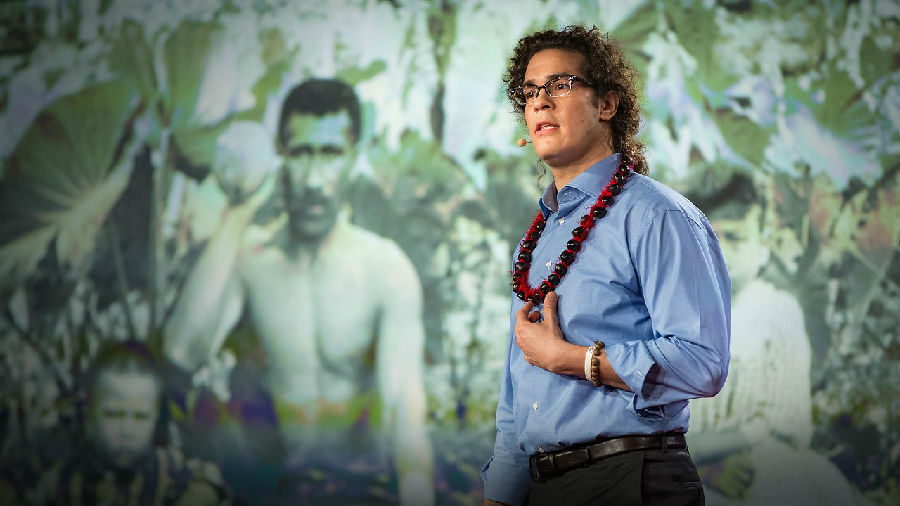As a little Hawaiian, my mom and auntie always told me stories about Kalaupapa
在我还是一个年幼的夏威夷人时,我的母亲和姑姑经常跟我讲关于卡劳帕帕的故事,
the Hawaiian leper colony surrounded by the highest sea cliffs in the world
那个地方充满夏威夷的麻风病患者,被世界上最高的悬崖包围。
and Father Damien, the Belgian missionary who gave his life for the Hawaiian community.
还有为夏威夷社区奉献一生的比利时传教士--达米安神父的故事。
As a young nurse, my aunt trained the nuns caring for the remaining lepers almost a 100 years after Father Damien died of leprosy.
我的姑姑,作为一名年轻的护士,在达米安神父死于麻风病近一百年后,训练修女们照顾剩下的麻风病患者。
I remember stories she told about traveling down switchback cliff paths on a mule,
我依旧记得她讲述的故事:她和我的叔叔骑着骡子穿行在高低起伏的悬崖小路上,
while my uncle played her favorite hula songs on the ukulele all the way down to Kalaupapa.
我的叔叔用尤克里里琴弹奏她最喜欢的夏威夷歌曲,直到到达卡劳帕帕。
You see, as a youngster, I was always curious about a few things.
作为一个儿童,我一直对一些事情感到好奇。
First was why a Belgian missionary chose to live in complete isolation in Kalaupapa,
首先,为什么一个比利时传教士要选择在卡劳帕帕住着与世隔绝的生活,
knowing he would inevitably contract leprosy from the community of people he sought to help.
并且不可避免会从他帮助的社区里的人们那里传染到麻风病。
And secondly, where did the leprosy bacteria come from?
还有,卡劳帕帕的麻风病菌是哪里来的?
And why were Kānaka Maoli, the indigenous people of Hawaii, so susceptible to developing leprosy, or "mai Pake?"
为什么夏威夷的土著居民如此容易受到麻风病的感染?

This got my curious about what makes us unique as Hawaiians -- namely, our genetic makeup.
这让我好奇是什么让我们夏威夷人不同?答案就是我们的基因。
But it wasn't until high school, through the Human Genome Project,
但是直到高中,通过一个人类基因组的项目,
that I realized I wasn't alone in trying to connect our unique genetic ancestry to our potential health, wellness and illness.
我才发现我并不是唯一一个想要追溯我们特有的基因祖先,为了了解我们的潜在健康和疾病。
You see, the 2.7 billion-dollar project promised an era of predictive and preventative medicine based on our unique genetic makeup.
要知道,这个27亿美元的计划在研究我们特有基因的基础上保证了一个可预测,可预防的医疗时代。
So to me it always seemed obvious that in order to achieve this dream,
显而易见,为了要完成这一个梦想,
we would need to sequence a diverse cohort of people to obtain the full spectrum of human genetic variation on the planet.
我们需要排列一群不同的人来取得地球上变化多样的人类基因的遗传谱。
That's why 10 years later, it continues to shock me,
这就是为什么10年后,我不断被惊讶,
knowing that 96 percent of genome studies associating common genetic variation with specific diseases
发现96%与特定疾病有关的基因多样性的实验
have focused exclusively on individuals of European ancestry.
都只研究了祖先是欧洲人的人群。



